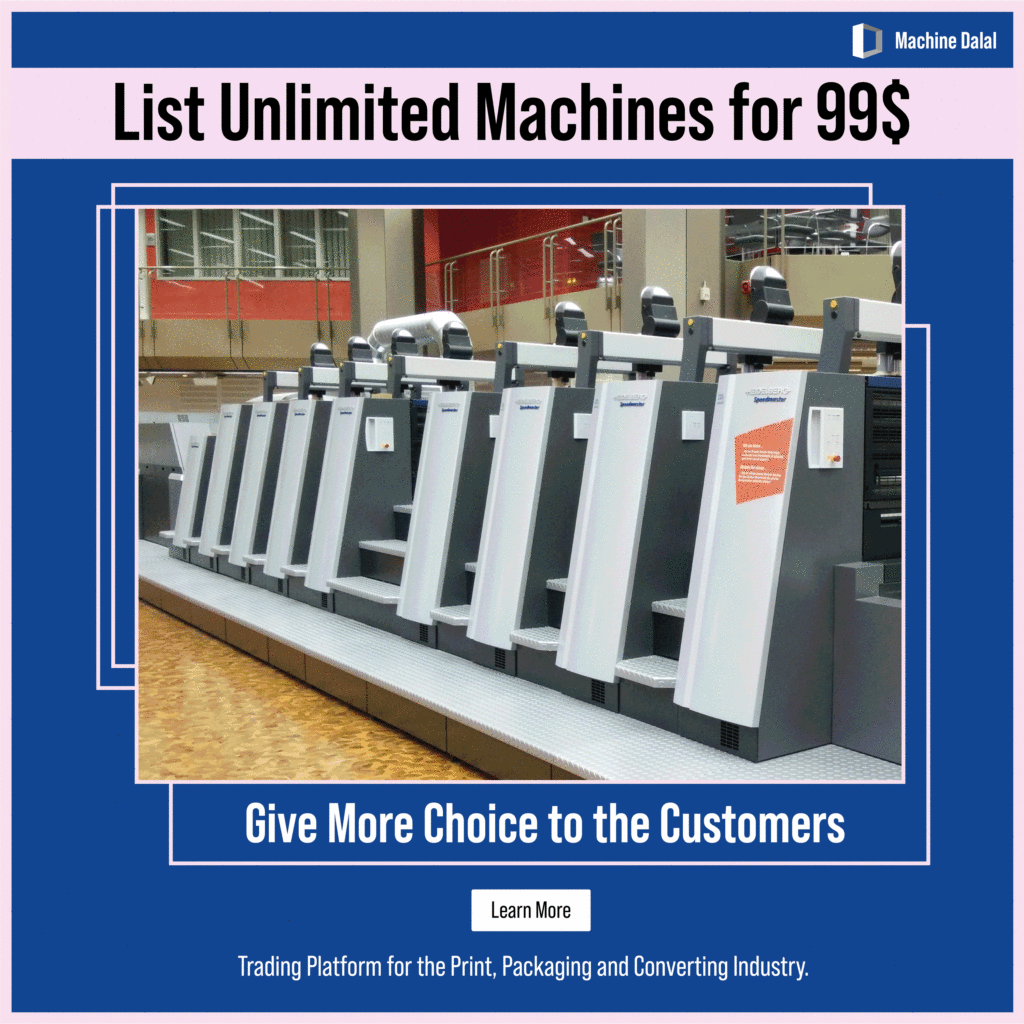The packaging industry has been undergoing a great transformation in the past few years with new developments in digital print leading the way. Digital printing has given brands and businesses new opportunities to engage with their customers in a more interactive manner.
The new advances in Inkjet technology are seeing a lot of developments in prepress workflow automation in addition to workflow integration and digital finishing. It supports a diverse range of faster presses and substrates, thus providing more options in packaging designs by integrating digital and conventional printing methods.
Digital package printing as advertising tool
Digital printing is now being used to elevate brands through storytelling and co-creation, says HP Indigo-WARC report.
Packaging is becoming one of the most effective channels for advertising, unlocking demand for digital printing that is, in turn, forming stronger connections between brands and customers. Digitally printed packaging allows businesses to create distinctive, interactive, and shareable experiences.

Packaging can be used for advertisement, telling a story and as a platform or strategy to drive more engagement.
Digital package printing provides a unique service to advertising agencies and the packaging industry. It opened up the door to printing on demand and at a shorter run length thereby enabling manufacturers to do test marketing, event marketing, produce mock-ups and make personalized boxes.
Personalised packaging is the need of the day!
Together with groundbreaking software innovations, it is how digital printing unleashed the endless possibilities of customized packaging printing. Since its introduction, digital printing of labels and packaging has become indispensable in the segment.
Digital printing means brands can make packages personalized and customized without disrupting their printing process. Now brands of all sizes can deliver personalised, customised messaging that can complement social media strategies and mirror a brand’s digital presence. With special thanks to newer innovations in digital print packaging technology, brands can now align their in-store experience with other channels in the marketing mix, both online and offline.

The campaign personalized Kitkats, produced by UK-based HP Indigo customer Ultimate Packaging is one of the examples of the growing trend for web-to-print personalization in print and packaging.
According to WARC, 53% of Gen Z want brands to offer personalised or customised products. Personalized packaging can thus become a vehicle for consumers to express themselves or their preferences and allows consumers to select the packaging that speaks to them individually.
Changing how CPG brands go to market
Digital print technology is also changing CPG brands’ go-to-market strategies in various ways. It empowers brands to bring in more variation in package design in order to appeal to more and more narrowly defined consumer niches. It helps in adding more technology layers like printed electronics, QR-coding, VR and AR layers to connect the brand with the consumer on a variety of online channels.
Personalized Campaigns
The digital evolution enabled brand owners to personalize campaigns through packaging.
For instance, the global ‘Share a Coke’ campaign heralded a new era in customized label printing; first in its kind. It redefined the role of packaging as a marketing medium in the age of social media, appealing to millennials who value uniqueness.
Take another example of sending a strong social message through an engaging marketing campaign. Hershey, for example, with #HerShe used digital printing to transform a chocolate bar wrapper into a celebration of women to mark International Women’s Day.

The confectionary giant used digital print to create a truly creative and engaging marketing campaign to celebrate women — all while digitally printing its packaging in a more sustainable way and reducing the business’ impact on the environment.
Digital Printing’s Impact on Fashion and Apparel
Digital textile printing is also transforming the customary two-season fashion cycle.

The companies like Zara – a subsidiary of Inditex –are now utilising technology to produce collections all year round.
The introduction of inkjet technologies for fashion and apparel applications over the years has meant that high-resolution pattern and image prints have become increasingly popular in the fashion industry – from complex florals and animal prints to detailed photorealistic visuals and repetitive, intricate brand designs.
Packaging can be the first touchpoint a consumer has with a brand and it is therefore important to invest in packaging solutions that appeal to consumers and enhance their in-store experience as well. It provides the opportunity for longer-term brand-building through personalized and contextual variations in the packaging design of the product.
Machine Dalal platform is preferred by the buyers and sellers from the global print industry to get directly connected with each other and trade their machinery.
Visit the Machine Dalal website or simply download our app onto your Android or iOS smartphone.


